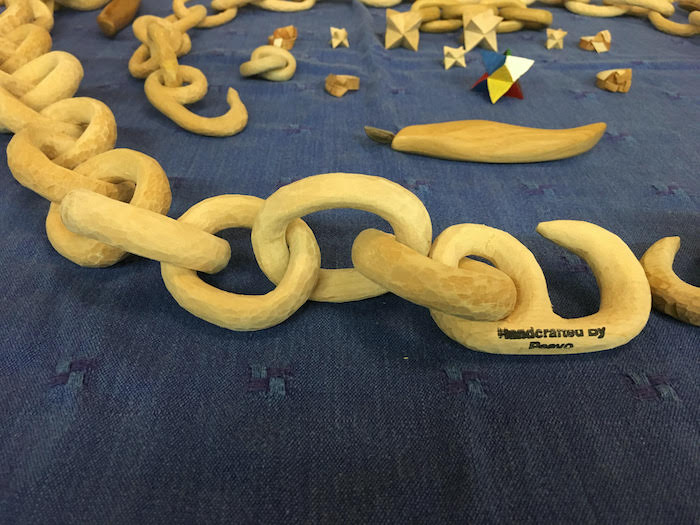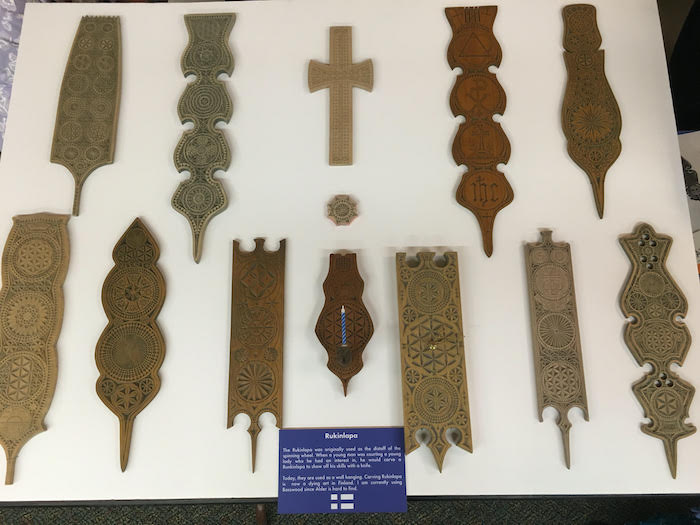Art Form: Finnish distaff carving
Location(s): Hessel (Mackinac County)
Paavo Nurmi

Paavo Nurmi in traditional Finnish dress

Handcarved wooden chain made by Paavo Nurmi

A host of distaffs carved by Paavo Nurmi
Paavo Nurmi (1936-2021) was born in Karelia, Finland. At about 18 years of age he emigrated from Finland to Detroit, Michigan, with his family. He met a Finn who told him that the local tool and die factory was looking for men; Paavo applied and was hired. Paavo spent his entire work life in that industry and loved it. This highly skilled labor required knowledge of mathematics, precision, and dexterity, which prepared Paavo for his future artistry and chip carving.
In the 1970s Paavo saw an image of a Finnish chip carved distaff (rukinpala) in a book his friend Seppo Vilkkila had purchased, a highly ornamented spindle to collect spun threads and yarns. Intrigued and challenged, they decided they wanted to try their hand at this artistic endeavor. Like most Finnish men of their generation, they had worked with wood in Finland, and with his experience as a tool and die maker, Paavo knew he could chip carve distaffs. Paavo contacted a relative in Finland who obtained alder wood, which, according to Paavo, is difficult to find. He tried working with different woods, including basswood, but was not satisfied with it. He prefers alder wood, especially for its grain. Paavo purchased carving knives from Finland, but after using them for a short time, decided to make his own. As he put it, “Being a tool and die man, I got some scrap steel from work and made my own knives. All of these knives I made myself out of high speed steel. They are very sharp and they fit my hand because I made the handles too.” Each distaff takes over 100 hours to carve.
Over the decades, Paavo made distaffs for his children, grandchildren, great-grandchildren, relatives, and friends. He did not sell them. Paavo also maked himmeli (straw Christmas hangings) known all over the Nordic world. He carved chains out of single pieces of wood, another folk art that Finnish Americans are known for. Paavo has appeared at a number of Finnish American festivals (always in Finnish traditional dress) with his distaffs where he educated viewers about distaffs and carving in Finland.
Though self-taught, Paavo’s love of carving comes out of his strong Finnish identity. He pursued a Finnish folk art that is not as prevalent in Finland today and in so doing, proclaimed his heritage and preserves the art of carving.
- Dr. Yvonne R. Lockwood and Micah Ling, 2020





